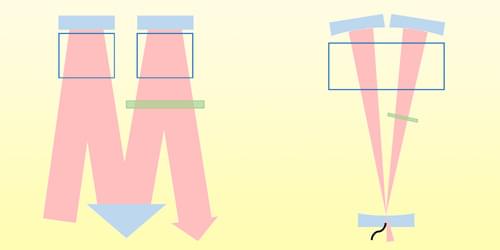From the slivers of natural magnetite used as the earliest magnetic compasses to today’s cryogenically cooled superconducting quantum interference devices, researchers have employed many diverse means to measure magnetic fields. Now Robert Cooper at George Mason University, Virginia, and colleagues have added two more [1]. Their instruments, which are variations on a high-precision instrument called an optically pumped atomic magnetometer, are the first demonstrations of “intrinsic radio-frequency gradiometers.” These devices are especially suited to measure weak, local radio-frequency sources while excluding background fields.
At the heart of an optically pumped atomic magnetometer lies a gas of alkali atoms whose spins are aligned by a circularly polarized laser—the optical pump. The presence of an external magnetic field perturbs the spin axis of these atoms, showing up as a change in the polarization direction of the probe beam—a second, linearly polarized laser that is also transmitted through the gas.
In the devices devised by Cooper and his colleagues, the probe beam makes multiple passes through the alkali gas, maximizing the device’s sensitivity to weak fields. In one setup, a high-power probe beam takes a single M-shaped route through the gas, passing twice through a pair of vapor cells. In the other, a low-power beam traces overlapping V-shaped paths, passing 46 times through a single vapor cell.
